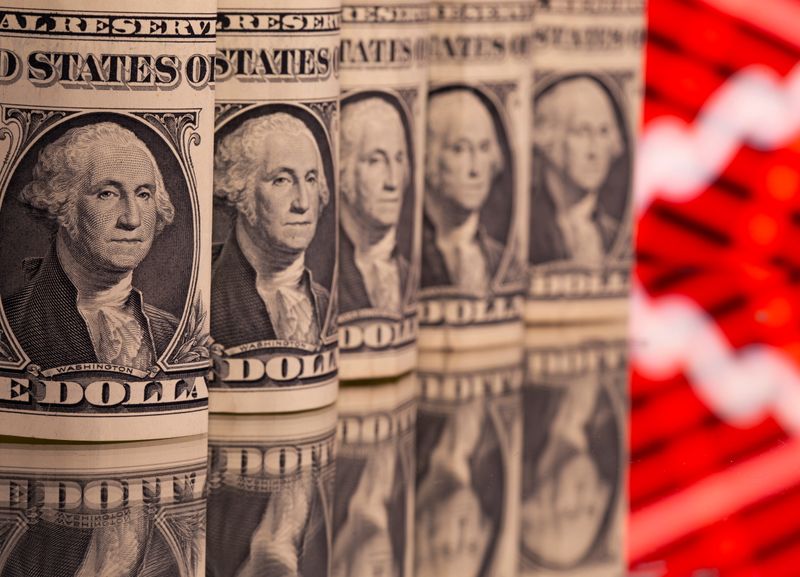By Gertrude Chavez-Dreyfuss
NEW YORK (Reuters) – The dollar gained against major currencies on Thursday after Federal Reserve Chair Jerome Powell signalled U.S. interest rates will likely peak at a higher level than markets expected, while sterling fell after the Bank of England raised rates but warned of a “very challenging outlook.”
The BoE lifted UK interest rates to 3% from 2.25% in its largest single increase since 1989, as it battles the twin forces of a slowing economy and red-hot inflation.
The central bank forecasts inflation will hit a 40-year high 11% during the current quarter, but it pushed back against expectations for further steep rate hikes. The bank said Britain has already entered a recession that could potentially last two years, longer than during the 2008-09 financial crisis.
The Fed on Wednesday raised interest rates by 75 basis points to a target range of 3.75%-4.00%, the fourth such increase in a row, as Powell dampened hopes of a pivot to an easier monetary policy.
“It is very premature to be thinking about pausing” on the effort to lift the federal funds target rate, Powell said in a news conference on Wednesday.
Juan Perez, director of trading at Monex USA in Washington, said the dollar’s dominance will continue “as thoughts of a recession grow for the global economy, which will drive more flight to safety bids towards the buck.”
The futures markets on Thursday has priced in U.S. rates peaking at 5.15% at the June meeting in 2023, which was up from about 4.9% initially expected in May.
In afternoon trading, the euro fell 0.6% against the dollar to $0.9758. That pushed the dollar index up 0.7% on the day at 112.86. Earlier, it touched 113.15, its highest since Oct. 21.
The higher terminal rate “may postpone the U.S. dollar peak that we’ve been expecting by 1-3 months,” wrote BMO Capital currency strategists Greg Anderson and Stephen Gallo.
Thursday’s data showed a U.S. economy that still seemed to be humming along. The number of Americans filing new claims for unemployment benefits unexpectedly fell to a seasonally adjusted 217,000 for the week ended Oct. 29, while nonfarm productivity, which measures hourly output per worker, rose at a 0.3% annualized rate last quarter after slumping at a 4.1% pace in the April-June quarter.
The market is now focused on Friday’s U.S. non-farm payrolls report for October, with Wall Street economists forecasting 200,000 new jobs and 3.6% unemployment rate, according to a Reuters poll.
“That would still be much too strong to change the Fed’s tightening plans, although we suspect the average hourly earnings data will show a further gradual slowdown in wage growth, which the surveys suggest has further to fall,” said Andrew Hunter, senior U.S. economist at Capital Economics.
The pound dropped to a two-week low against the dollar and a one-week trough versus the euro in wake of the BoE statement. Sterling was last down nearly 2% against the dollar at $1.1165, while the euro rose 1.4% to 87.37 pence.
The BoE’s decision – the biggest rate rise in 33 years apart from a failed attempt to support the pound on Black Wednesday in 1992 – was in line with economists’ expectations in a Reuters poll, but was not unanimous.
The pound, like most major currencies, had already been on the backfoot against the dollar on Thursday.
The dollar rose 0.2% against the yen to 148.205 yen, as traders continue to watch for any further official intervention to shore up the battered Japanese currency.
Japan spent a record $42.8 billion propping up the yen last month via a series of unannounced purchases, after spending almost $20 billion in September.



